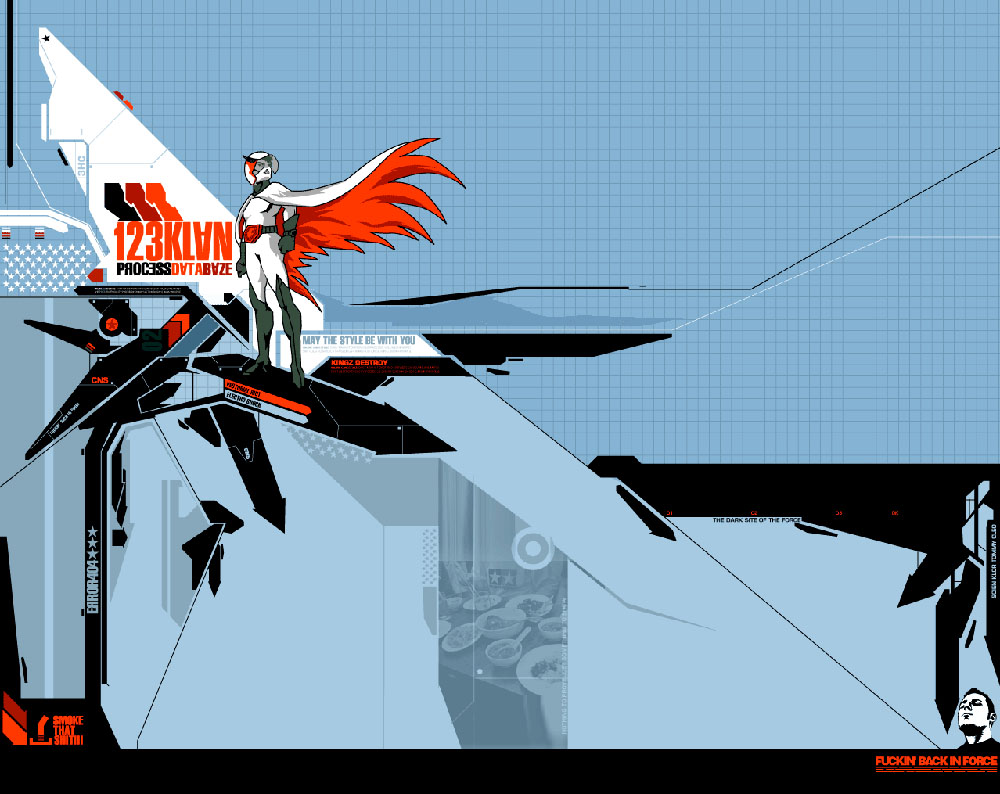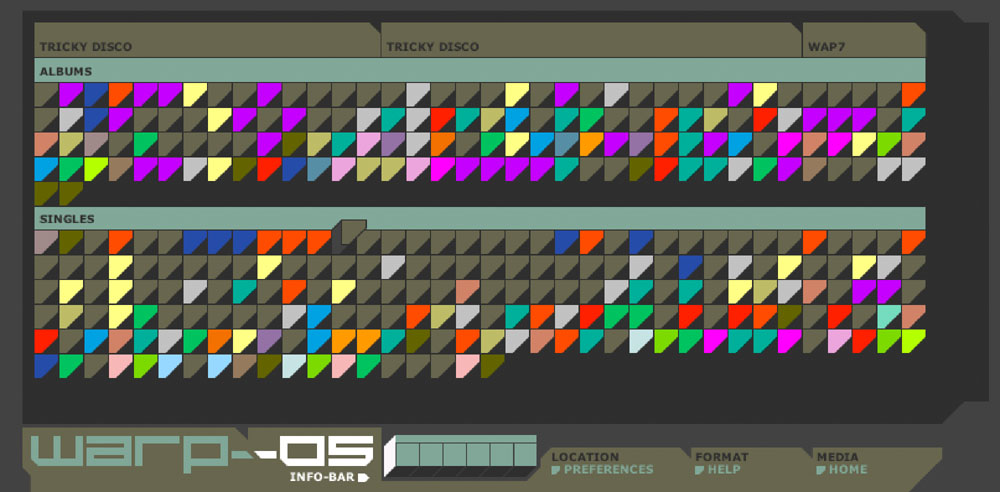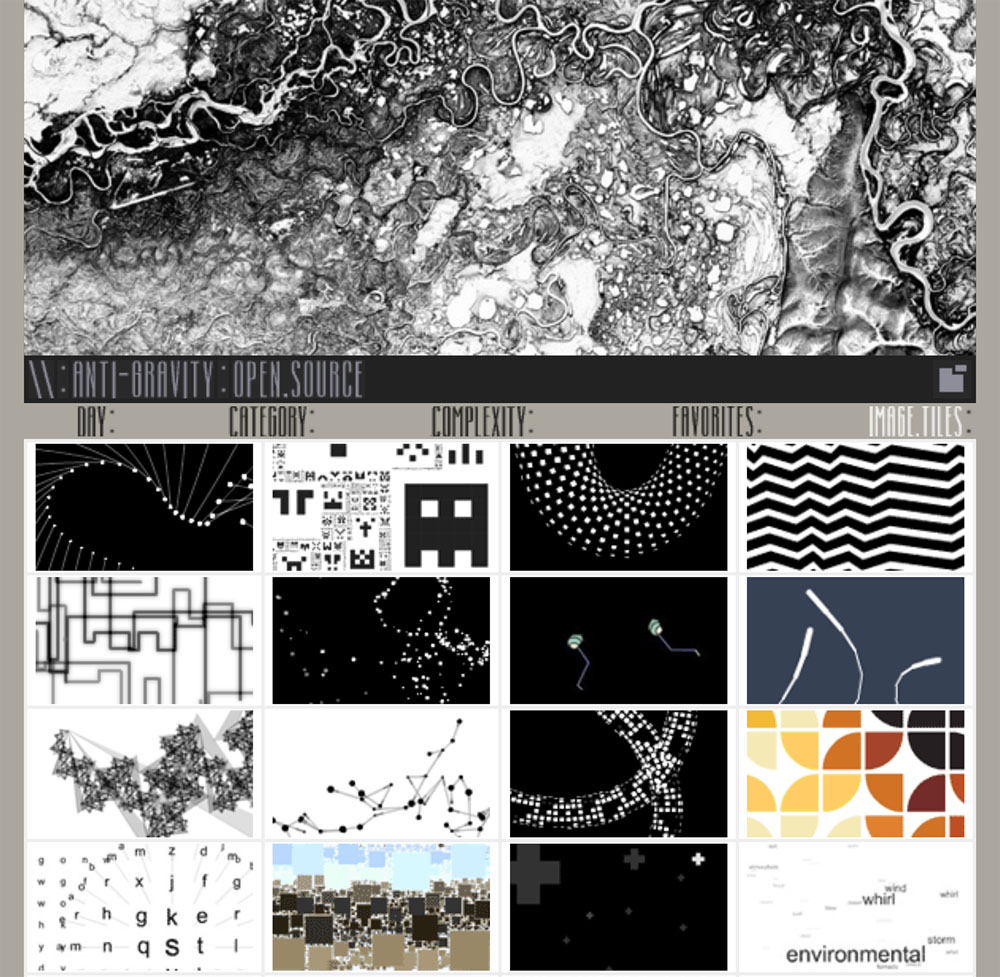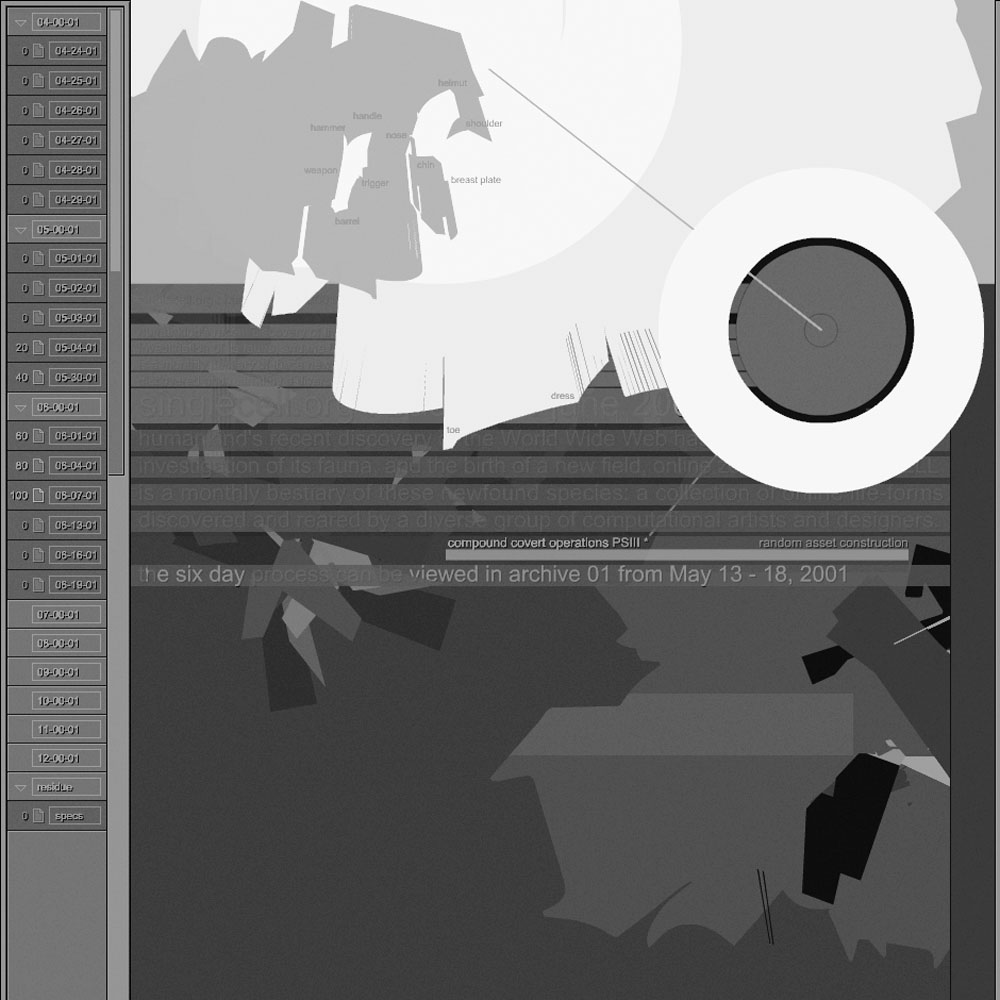Back in October 2000, the gurus of user experience (UX) design Jakob Nielsen and Don Norman stated that Adobe Flash (1996) had created a sort of “usability disease.”11 Jakob Nielsen, Flash: 99% Bad, (Nielsen/ Norman Group, 2000), http://b-o.fr/nielsen As faithful defenders of a form of functionalism, they advocated for the abandonment of enriched media in order to recenter the Web solely upon content, without other sorts of inventions. In 2010, one heard equally peremptory affirmations when Steve Jobs called for the abolition of Flash.22 Steve Jobs, Thoughts on Flash, April 2010, http://b-o.fr/jobs No one would tolerate this technology any longer, despite all its contributions to a wide variety of creations over almost fifteen years: immersive web design, sophisticated animation, multimedia content, introductions, non-standard interactions, and the list goes on.
The end of the 2000s was a strange sort of turning point for the Web. On the one hand, the Net was progressively liberating itself from devices, operating systems and software. On the other, the monetization of user data confined it to services, platforms and e-commerce, proprietary models, and surveillance. By pointing out some real flaws in Flash (energy consumption, bugs, lack of support for touch screens), the actors in these new markets linked to the emergence of the mobile web (notably Apple iOS) were ridding themselves of a competing technology, certainly a proprietary one, but also one that offered rich and interactive content without a financial quid pro quo.33 See Nathalie Lawhead, A Short History of Flash & the Forgotten Flash Website Movement (when websites were “the new emerging art form”), Nathalielawhead.com, November 2020, http://b-o.fr/lawhead From 2010 on, under their influence, web design became resolutely orientated in a mobile direction, closing its doors to Flash, even while, at the same moment, Adobe was inaugurating the Adobe Museum of Digital Media, a museum dedicated to digital, with a major emphasis on Flash content (offline since 2018).
As of the end of 2020, it will no longer be possible to load sites with Flash on the major web browsers. This technological abandonment is the final consequence of a movement initiated by the major players of the Internet, Adobe included, who aimed to bring about the definitive retirement of Flash, in total disregard for the existence of millions of websites. Only a few institutions, private for the most part, showed any sensitivity with regard to this legacy: the Web Design Museum,44 The Web Design Museum is an online platform that presents a selection of over 1600 websites conceived between 1991 and 2006, http://b-o.fr/wdm Internet Archive,55 The Internet Archive is an organization founded in 1996 whose objective is to archive the Web by creating screenshots (saving content as it exists at a given moment) and then making these accessible, http://b-o.fr/internet-archive Flashpoint,66 Flashpoint is a project for the preservation of web games launched by BlueMaxima in 2018, http://b-o.fr/flashpoint and the Bibliothèque Nationale de France (which maintains a partial database of the French Web that one can only consult physically onsite).77 Bibliothèque Nationale de France, Internet Archives, http://b-o.fr/bnf The most astonishing thing is that this deactivation seems to be taking place amidst general indifference.88 See Nicole Carpenter, “Flash Support is Ending in 2020. Its Legacy Needs To Be Preserved,” (Polygon, 2020), http://b-o.fr/carpenter Paradoxically, the Internet, the descendant of the wide-ranging visions of the Mundaneum,99 The Mundaneum is a bibliographical directory of universal scope, considered as an ancestor of the Web. Established in Brussels in 1920 by Paul Otlet and Henri La Fontaine, it comprised sixteen rooms with a didactic function that housed 12 million bibliographical files and a press museum that includes 200,000 newspaper editions.  Memex,1010 The Memex is a fictitious device that predates the dematerialization of content and its worldwide interconnection. It was conceived by Vannevar Bush in “As We May Think,” published in 1945 in the Atlantic Monthly, http://b-o.fr/bush and cyberspace itself,1111 See William Gibson, Neuromancien, (Paris: La Découverte, 1985). seems to be chugging along with a delimited memory, as if users have just curled up comfortably with the hardware constructors’ model of planned obsolescence. Would we even think of denying access to books whose format, or whose editor had become “obsolete”? The Internet and web design tend to ignore their history, in contrast with say the film industry, who has institutionalized its heritage. What is absurd is that, as in the case of interactive CDs, several current trends consist of reinventing things that Flash had already firmly established over the course of the 2000s—micro-animation, micro-interaction, animated visual identities, etc. This movement has regained impetus after a long period of lethargy, full of animated GIFs, a format that has itself been rehabilitated artificially as of 2010 with the announcement of the termination of Flash.1212 See in this issue: Olia Lialina, “Telling GIFs From Animated JPEGs.” For designers, it’s a loop on unlimited replay.
Memex,1010 The Memex is a fictitious device that predates the dematerialization of content and its worldwide interconnection. It was conceived by Vannevar Bush in “As We May Think,” published in 1945 in the Atlantic Monthly, http://b-o.fr/bush and cyberspace itself,1111 See William Gibson, Neuromancien, (Paris: La Découverte, 1985). seems to be chugging along with a delimited memory, as if users have just curled up comfortably with the hardware constructors’ model of planned obsolescence. Would we even think of denying access to books whose format, or whose editor had become “obsolete”? The Internet and web design tend to ignore their history, in contrast with say the film industry, who has institutionalized its heritage. What is absurd is that, as in the case of interactive CDs, several current trends consist of reinventing things that Flash had already firmly established over the course of the 2000s—micro-animation, micro-interaction, animated visual identities, etc. This movement has regained impetus after a long period of lethargy, full of animated GIFs, a format that has itself been rehabilitated artificially as of 2010 with the announcement of the termination of Flash.1212 See in this issue: Olia Lialina, “Telling GIFs From Animated JPEGs.” For designers, it’s a loop on unlimited replay.
Development and Rise of the Web
When we speak of Flash, we are commonly referring here to three elements: the media file format Flash, integrated into webpages (Small Web Format, or SWF), the publishing tool (the Adobe Flash software1313 Initially Macromedia Flash, then Adobe Flash, it is now called Adobe Animate and is now refocused upon vector animation.), and finally the platform, a synergy of the first two: a set of data formats, tools and protocols.
Flash’s origins lie in the animation software SmartSketch, first published by FutureWave in 1993.1414 See Richard C. Moss, “The Rise and Fall of Adobe Flash,” ArsTechnica, 2020, http://b-o.fr/moss It was bought out by Macromedia in 1996. They had the financial smarts to negotiate for its default installation on all operating systems through the browser Microsoft Internet Explorer. As of 1997, Flash became the essential authoring software for the creation and publication of multimedia content, adapting the functionalities of Macromedia Director for CD-ROMs to the Web. During this period, when the Internet was only just becoming available to the general public, and the 56k dialup modem was the norm, considerations of portability and standardization were relative, and accessibility was largely a matter of bandwidth. It was important to offer a Web of “rich” content, attractive, and above all, light. In this case, a Flash animation in a vector drawing
 was on average a hundred times lighter than its animated GIF equivalent, and approximately a thousand times lighter than an MPEG video. Unlike Apple QuickTime (.mov), Windows Media Player (.avi) and RealPlayer (.rv), which required additional plug-in installations in order to read AV web content, Flash enabled you to generate animation, vector or bitmap images, sound, as well as user events, that is to say interactivity.
was on average a hundred times lighter than its animated GIF equivalent, and approximately a thousand times lighter than an MPEG video. Unlike Apple QuickTime (.mov), Windows Media Player (.avi) and RealPlayer (.rv), which required additional plug-in installations in order to read AV web content, Flash enabled you to generate animation, vector or bitmap images, sound, as well as user events, that is to say interactivity.
Nevertheless, Flash remains a proprietary technology, a specificity that remains incompatible or problematic with certain orientations (or strategies) of actors (or industrialists) of the Internet in the mid-2000s. As a platform, Flash also raises many problems, which its detractors put forward: security, management of private data, interoperability. Today it is regarded as a veritable technical burden for Adobe, who has had control of the technology since 2005.
Page, Composition, Space, Navigation, Transition, Choreography
As of 2000, the designers who produced Flash animation began making use of its programming functions. The structure of ActionScript, its language, inherited from object-oriented programming languages, fits perfectly within a graphical user interface made up of menus and palettes, facilitating access to powerful interactive functions without the requirement of a prior knowledge of coding. The SWF media format is integrated into the HTML code of a page, transforming it into a zone open to manipulations other than just hypertext links.
While initially onscreen graphic composition remained faithful to print norms, animation intervened, little by little. Progressively, the text adapted dynamically and visual identities were enriched by micro-animations. Designers no longer just produced isolated blocks of information, but also became involved in the visual transitions that linked them together. The Flash desktop application was a response to the systemic logic of a web project, with its library of components (assets). However it deviates from writing code, instead mobilizing the paradigm of the object and a scenographic system. It appropriated the metaphors of theater and film from its ancestor Macromedia Director, with an interface that was divided into stages, timelines, libraries (formerly ‘casting’ in Director), clips, etc. Flash enabled designers to push the parameters of the browser beyond page referencing towards a mechanism similar to that of a movie screen and a video game dynamic. The surface remains, but dissociates itself from webpage content by opening up a space in depth. The screen works like a window on a scene in the theater, or the field of a new universe. The hypertext link becomes polymorphous, and the narration lends itself to the navigation, which rediscovers its spatial and temporal significance. The flow opens itself onto new directions, a rhetoric in the form of actions, similar to video games.1515 See Frédérique Calcagno-Tristant, “‘Le jardin aux sentiers qui bifurquent’ (Borges), rhétorique du jeu d’aventure multimédia,” Communication, 22:1, (2003), 33–54.
While it did not yet appeal to the new type of developer, designers, and, by extension, artists began exploring these new vedute. It is well and truly “what you see” that is shown in a script, particularly it is a matter of “how you see it,” since exploration is effected through interactivity. Consequently the spectator of the work becomes, through their gestures and operations, a user, a player even as they enlarge, reduce, scroll, drag, rotate, roam, or overlay. Flash designers on the Web experimented intensively with these movements and manipulations, largely appropriated from video games. They constitute the basis of the contemporary design concepts of UI/UX choreography, including tactile interfaces.1616 See Rebecca Ussai Henderson, “The Principles of UX Choreography,” Medium, (FreeCodeCamp, 2015), http://b-o.fr/henderson They stress the mental representation of visual information constructs which the user manipulates or within which they circulate.
Interaction, Manipulation,
Ergonomics, Objects
Although users had already been interacting in multiple ways (click, double-click, cut and paste, drag and drop) with their operating systems since the mid-1980s, by the 2000s, the interactive grammar of the Web was summed up by scrolling and clicking. The arrival of Flash opened up a complete palette of animations one could trigger at will in order to create interactions that had never been possible before. As in video games, if the user physically moves the keyboard and mouse, they symbolically appropriate other actions, borne along by the interface of the proposed content (dragging, dropping, scrolling) that takes on meaning within their context (grabbing, throwing, jumping). Even as the cursor is transformed into a pencil or a pot of paint in Adobe Photoshop, the interface is enriched, and here, all the more so, with animation, micro-movement, micro-interactions, and sound, in response to the commands of the user, in a kinetic logic that reproduces an absolute referential frame (speed, inertia, rebound).1717 See PowerCursor, a software library whose aim is to add a optically simulated haptic feedback to the pointer, https://www.powercursor.com/ A list of words can take on the material dimension of an object to be manipulated, with drawers, panels or wheels, becoming a navigation menu: a dynamic object, in all its glory as manipulative material, with friction, sliding, adaptability or rigidity. 
Like the player, the user becomes a performer of the proposed device and can even sometimes be the condition of its formalization (generative design) or that which gives it meaning. These environments and visual, animated, interactive and sound systems were undoubtedly harbingers of the paradigms of tactile interfaces, which began to appear in the 2010s.1818 See Koert van Mensvoort, What You See is What You Feel, (Sarrebruck: Lambert Academy Publishing, 2009). With the enrichment of interactions, the reader’s navigation of content began to be conceptualized. The formalization of the interface thus began to contribute to cognition, the intelligibility of the message or the visual universe offered by designers. As a result, we can gain a more nuanced understanding of the criticism regarding the usability of Flash sites than that provided by Nielsen and Norman in 2000.1919 Op. cit., see note 1. Flash’s shortcomings regarding interoperability or content indexing are largely compensated by the increased ergonomics of more intuitive websites and by the rise of a veritable interface culture, a completely new phenomenon in the history of software, aside from video games.
Navigation, Interaction,
Exploration, Narration
This explosion of interactive graphics systems, made available to an ever wider public, favored the creation of a wide range of objects, media and content, from the classic website, considered to be a format for raw data, as conceived by Tim Berners-Lee, to new types of objects—functional, informational, reactive, recreational.
In the case of online video games, Flash made web browsers into distribution platforms while overriding certain practices, notably by contributing to the rise of casual gaming. There was widespread appropriation of basic gameplay, inherited from the ‘point and click’ era, in order to refine levels of interactivity. Without fundamentally upending genres, this new platform provided video games with the network capability reserved previously for the Web: interconnectivity with external content, or data sharing with other platforms, notably social networks. These games were also able to work as relays for information objects (IOs) identified as promotional sites for agencies,
pages for product launches or information about cultural events. Some games are also magazines, transposed from a preexisting paper medium or conceived for onscreen publishing, and they now expanded into new areas of distribution and expression through this interactive and recreational evolution.
As of 2005, Flash was also a key factor in the emergence and massive success of online video platforms such as YouTube. The explosion of video use, in association with its interactive possibilities, also brought about the advent of the webumentary. These sites, featuring enriched editorial content, enable the user to navigate within a narrative device, as an actor of the narration.2020 See Marida Di Crosta, Entre cinéma et jeux vidéo: l’interface-film, (Brussels/Paris: De Boeck/INA Éditions, 2009). Also see the Kongregate platform which proposes these types of games, https://www.kongregate.com They proposed interactive access to contextual data in a variety of formats, all within a unique interface. Among these innovative web objects, some were completely new, some a compilation of all genres, some the echo of artistic performances,
and others did not correspond with any predefined use, “unidentified interactive objects,” in a manner of speaking.
In the mode of readymades, the raison d’être of others was merely a vain attempt at exploration or the result of enthusiastic manipulation. Whether asserting alternate narrative modes, seeking out the shadow web, or in the throes of compulsive interactivity, its authors conferred the site with the status of an original object, and began to delineate the contours of a new culture of interactive design.
Design and Code
On a certain level, the proprietary status of Flash contributed to questions of the code being considered intellectual property. Combining program and graphical user interface (GUI) in the same object, these sites are thus considered to be multimedia works, like software, CDs, or video games, and are consequently protected by copyright. This protection was also inferred by the Flash platform itself: in fact, once edited, the SWF files were technically locked and it was impossible to modify them without access to the source file (FLA). This security certainly reassured the authors, contributing to the rise of an economy generated by the creation of interactive content, and finally, the emergence of a full-on profession: Flash designers. The term was intended to create a definitive differentiation with the practice of graphic designers, integrating interactivity and programming as media in its own right. While interface design already existed, it was mostly associated with more technical software products. Flash designers extended the practice to web products even before the term web designer came into general use.
Despite the proprietary character of their platform and the need for their recognition as authors in their own right, many Flash designers became part of the Open Source movement, freely sharing and distributing their scripts under free licenses such as Creative Commons.  Beyond interface design, the emergence of web designers confers a performative aspect to graphics in the wake of the work of personalities like John Maeda or Golan Levin, whose status swings from artist to designer and scientist. They are contributors to generative design, which incorporates animation and interactivity within a digital plasticity. In a way, Flash designers prefigure this generation of developer-designers, aka creative coders, who have conceived graphic programming environments such as Processing, Scriptographer and openFrameworks in the mid-2000s.
Beyond interface design, the emergence of web designers confers a performative aspect to graphics in the wake of the work of personalities like John Maeda or Golan Levin, whose status swings from artist to designer and scientist. They are contributors to generative design, which incorporates animation and interactivity within a digital plasticity. In a way, Flash designers prefigure this generation of developer-designers, aka creative coders, who have conceived graphic programming environments such as Processing, Scriptographer and openFrameworks in the mid-2000s. 
Visually Learning Interactivity
and Interfacing
The Internet and Flash have brought the practice of programming to the field of graphic design. While many sites, books and tutorials have democratized their use, by default Flash provides an excellent context for the comprehension of libraries of components and script management, interactive processes or user events. Even if code remains the de facto backbone of any digital project, it is difficult to make it the meta-tool of interactivity, as much for the user who does not visualize the underlying programming of the interface they are manipulating, as for the designers who think above all of the relationship with information in terms of form, color or movement.
Flash brought about an introduction of interactive grammar through the metaphor of the white page, like any WYSIWYG publishing software. Moreover, this model, born from Apple HyperCard (1987) and Macromedia Director, still influences contemporary visual coding software, such as Scratch (2006),  intended to provide an introduction for children to working with interactivity. By combining a visual design interface and a programming environment within a coherent ensemble, Flash provided an entire generation of designers with a unified introduction to digital design. Many schools dedicated to interactive digital design integrated it into their pedagogical models that were specifically for the interactivity of the Web, since it enabled one to approach different types of editorial objects, up to and including video games (managed particularly by Unity since 2005). Its progressive abandonment plunged designers and teachers into a fair amount of disarray, forcing the adoption of less visual methodologies, which were therefore more difficult to access for the public. In the end, the latter is working with materials that are only graphic in terms of their destination.
intended to provide an introduction for children to working with interactivity. By combining a visual design interface and a programming environment within a coherent ensemble, Flash provided an entire generation of designers with a unified introduction to digital design. Many schools dedicated to interactive digital design integrated it into their pedagogical models that were specifically for the interactivity of the Web, since it enabled one to approach different types of editorial objects, up to and including video games (managed particularly by Unity since 2005). Its progressive abandonment plunged designers and teachers into a fair amount of disarray, forcing the adoption of less visual methodologies, which were therefore more difficult to access for the public. In the end, the latter is working with materials that are only graphic in terms of their destination.
Without a declared interactive or animation publishing tool as such, the teaching of web design has resorted to a more restrained practice, closer to printed publishing imported to the screen. It has been more of a challenge to tackle a design based on the notion of transition, one where interactivity is fundamental. The HTML/CSS/JavaScript trio does not offer the same freedom for visual composition, but rather incites one to look to other issues such as typographical management, multimedia and tactile distribution, or interrelationships with other objects or networks.
The direct consequence is that today interface design tends to reduce information to a solely typographical approach. Along the way, a more pictorial form of interface culture, animation and interactivity, approximating interactive works or video games, fell by the wayside. Other tools, such as rapid prototyping tools like Figma, XD or InVision, enable one to produce vaguely interactive objects from a Flash-inspired visual interface, but are limited to a logic of simulation. Today, Flash still has no equivalent as a means of teaching designers about the problematics specific to graphic interfaces and their interactivity.
Lost Generation
Within a decade, Flash formalized the interactivity of the Web. It enabled the conception and production of new objects of design by enabling new specific genres to emerge, whether recreational, documentary or experimental. It also responded to a generation of designers and artists who were the heirs of the legacy of hacker culture and cyberpunk idealism, and who perceived the Web as presenting the possibility of writing their own cultural system. As Lev Manovich emphasized in 2005:
This generation does not care if their work is called art or design. This generation is no longer interested in “media critique,” which preoccupied media artists of the last two decades; instead it is engaged in software critique.2121 Lev Manovich, “Generation Flash,” in Total Interaction: Theory and Practice of a New Paradigm for the Design Disciplines, Gerhard M. Buurman, ed., (Basel: Birkhauser, 2005), 66-76.
Today, we recognize the historical and cultural value of the first graphic interfaces or video games of the 1980s. Nevertheless, as with the multimedia productions, terminals or CDs of the 1990s, the Flash sites of the 2000s struggled to gain any recognition of their legacy. Moreover, interface design is taught in schools, but one must cross the Atlantic to see it recognized, archived and promoted as graphic practice, in the wake of figures such as April Greiman, Muriel Cooper, Laurie Anderson, John Maeda, or even Roberta Williams. Apart from a few rare anglophone exceptions, it is tragic to observe that these nonstandard cultural objects that have brought together an entire generation of designers, and which are sometimes the product of the most eminent of them, are still not considered worthy of careful conservation, even as the very platforms of these productions are disappearing as we write these lines.